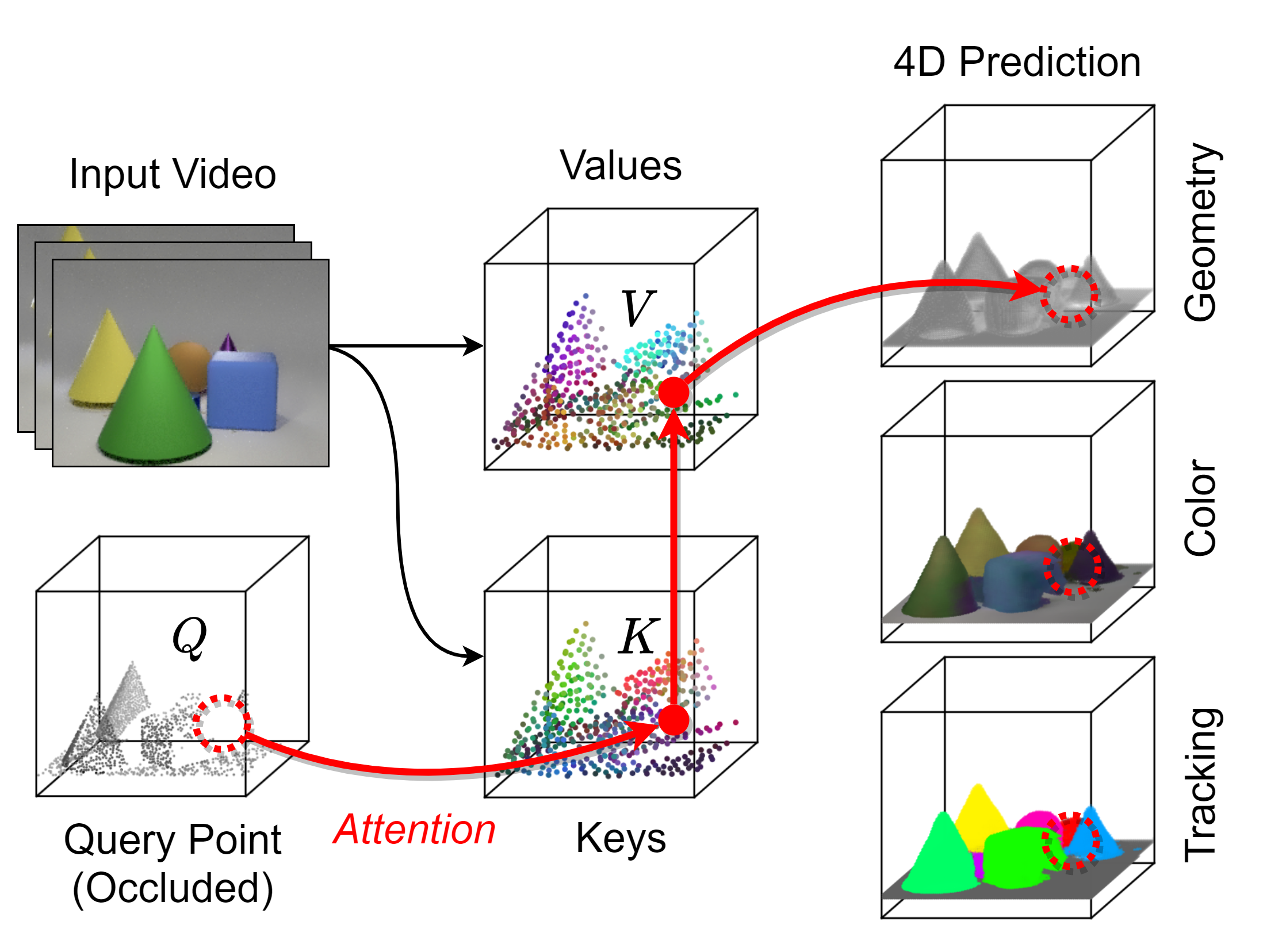Basile Van Hoorick, Purva Tendulkar, Dídac Surís, Dennis Park, Simon Stent, Carl Vondrick
Columbia University and Toyota Research Institute
CVPR 2022 (Oral)
This repository is aimed at publishing the PyTorch implementation underlying our attention-based continuous representation framework for dynamic scene completion.
We contribute two large-scale 3D video datasets, GREATER and CARLA, which are described and visualized on our website.
Click here to access the already generated data that we actually used to train and evaluate our models. This step is necessary to succesfully run the commands below.
This repository contains the video generation code, which may be useful if you want to tweak the synthetic environments from which our datasets are sourced.
We use Python 3.7.13 and libraries imported in __init__.py.
The commands that we used to train our models are listed below.
For GREATER:
CUDA_VISIBLE_DEVICES=0,1,2 python train.py --name gv1 --num_workers 52 --data_path /path/to/greater/ --batch_size 3 --up_down_blocks 3 --transition_factor 3 --pt_feat_dim 36 --pt_num_neighbors 14 --pt_norm_type none --down_neighbors 12 --n_points 14336 --n_data_rnd 14336 --video_len 12 --frame_skip 2 --pt_cube_bounds 5 --cr_cube_bounds 5 --implicit_mlp_blocks 6 --local_implicit_mode attention --cross_attn_layers 2 --cross_attn_neighbors 14 --abstract_levels 1 --color_mode rgb_nosigmoid --num_epochs 20 --density_lw 1.0 --color_lw 1.0 --segmentation_lw 0.0 --tracking_lw 1.0 --point_occupancy_radius 0.2 --air_sampling_ratio 1.5 --point_sample_bias none --past_frames 4 --future_frames 0
For CARLA:
CUDA_VISIBLE_DEVICES=0,1,2 python train.py --name cv1 --num_workers 52 --data_path /path/to/carla/ --batch_size 3 --up_down_blocks 3 --transition_factor 3 --pt_feat_dim 36 --pt_num_neighbors 16 --pt_norm_type layer --down_neighbors 12 --n_points 14336 --n_data_rnd 14336 --video_len 12 --frame_skip 3 --pt_cube_bounds 20 --cr_cube_bounds 16 --cube_mode 4 --implicit_mlp_blocks 6 --local_implicit_mode attention --cross_attn_layers 2 --cross_attn_neighbors 14 --abstract_levels 2 --semantic_classes 13 --num_epochs 40 --density_lw 1.0 --color_lw 0.0 --segmentation_lw 0.6 --tracking_lw 0.0 --point_occupancy_radius 0.2 --air_sampling_ratio 1.4 --point_sample_bias low_moving_ivalo_sembal --sample_bias occl --oversample_vehped_target 1 --past_frames 4 --future_frames 0
The --data_path argument should point to a directory that contains the train and val folders, which should themselves contain each scene as a separate folder. The exact format differs between GREATER and CARLA, but the code will select the correct data loader from data/ accordingly.
We use the wandb library for logging, but additional logs are also stored in logs/, while checkpointing is done in checkpoints/.
See pretrained/.
@inproceedings{vanhoorick2022revealing,
title={Revealing Occlusions with 4D Neural Fields},
author={Van Hoorick, Basile and Tendulkar, Purva and Sur\'is, D\'idac and Park, Dennis and Stent, Simon and Vondrick, Carl},
journal={Proceedings of the IEEE Conference on Computer Vision and Pattern Recognition (CVPR)},
year={2022}
}

